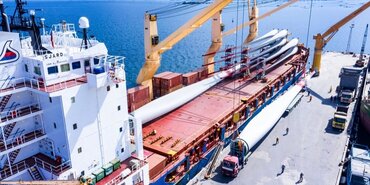TT Talk - Some rules of the road and rail in North America

When one looks at Road and Rail Risks in North America, there are many different regulations and time limits to be aware of depending on the type and location of transport.
As with any jurisdiction, there are the common plethora of operational risks involved in the transport of goods by road and rail in North America. What follows is a quick overview of some of the legal matters that need to be taken into account for movement of cargo.
Carmack Amendment – intra-US trade
In the United States, the Carmack Amendment covers goods moving by rail or motor carrier to or from a place within the US, but not, however, to international shipments originating from overseas. Carmack requires that motor carriers and freight forwarders issue a receipt or bill of lading for the goods/property received for transportation. Under Carmack, carriers are responsible for the actual loss of the property (without limitation). The time limit for filing a notice of claim is nine months from the date the goods were or should have been delivered. Sending the written notice of claim within the nine‐month period is a condition precedent to bringing the lawsuit, which then has to be brought within two years of the claim being denied.
Rail Risks in the US and Canada
Rail carriers in the US and Canada have a nine month time limit to file a claim which is noted in their contracts with shipping lines. This can, of course, create a problem as ocean bills of lading typically carry a one year time limit in which to file claims, consistent with the key current international maritime conventions. The result of this is that the shipping line may be exposed if a claim is received, whether from cargo interests direct or via the non-vessel operating carrier, in the 10-12 month period; the shipping line would be time-barred against the rail carrier and could be on the hook for tens of thousands of dollars of liability.
“Shipping lines are recommended to urge their customers to file claims within nine months for claims where it is clear that the incident occurred during rail carriage”
Shipping lines are recommended to urge their customers to file claims within nine months for claims where it is clear that the incident occurred during rail carriage. This may be obvious if the loss or damage arises from a derailment or where the incident was confirmed by the rail carrier to be a total loss.
Trucking Risks in the US
For trucking in the United States, the industry standard Uniform Intermodal Interchange Agreement (UIIA) requires truckers to maintain USD1 million general liability insurance and USD100,000 cargo insurance. Many truckers issue bills of lading which limit liability to 50 US cents per (US) pound unless the value of the cargo is inserted. As a result, shippers should purchase their own cargo insurance to avoid the situation where the cargo value exceeds the trucker's USD100,000 limit or is subject to an aggressive weight limit. Equally, carriers under combined transport documents need to be aware of the potential disparity in liability regimes if they seek recourse for an incident occurring during the road leg in the US. Depending on precise terms, a multimodal contract may concede a limitation exposure about double of that of the US trucker.
Road and Rail Risks in Mexico – are quite different!
In Mexico liability is based on the Roads, Bridges & Inland Transport Federal Law (RB&ITFL), which was enacted in 1993. The latest amendment, was published in June 2014 (in Spanish only)
Under section 66 the RB&ITFL, inland carriers, who are prima facie liable for loss or damage to cargo being transported, are able to limit their liability for loss or damage to cargo up to the amount resulting of multiplying 15 days of minimum salary in force in the Federal District of Mexico City per metric tonne of damaged or lost cargo. The minimum daily wages are established on a yearly basis by the National Commission of Minimum Wages of the Mexican Ministry of Labor. The table showing the minimum daily wages in Mexico can be found on the following commission site.
So, where this limitation applies, the customer (whether cargo interest or combined transport carrier) could be paid out at the equivalent of about seven US Cents per kilo on a current calculation! It is possible to declare the value of the cargo, against an additional charge, in which case the liability is for the full declared value.
“Carriers under combined transport documents need to be aware of the potential disparity in liability regimes if they seek recourse for an incident occurring during the road leg”
In order to be entitled to limit liability, the inland carrier must (a) be a holder of a permit granted by the Federal Government to perform transport of goods on Federal Roads and (b) the place of loss must be on Federal road or bridge. If the claimant can prove that the inland carrier intended to cause damage, limitation can be broken.
Actions against an inland carrier in Mexico are subject to a six month statute of limitations when the carriage is entirely within Mexican territory and one year when the shipment is bound for a foreign country. The time bar period is counted, in the event of loss, from the date estimated for the end of the voyage, and, in the event of damages, 24 hours from the delivery of the cargo.
We hope that you have found the above interesting. If you would like further information, or have any comments, please email us, or take this opportunity to forward to any colleagues who you may feel would be interested.
We look forward to hearing from you.
Peregrine Storrs-Fox
Risk Management Director, TT Club
- Author
- Staff Author
- Date
- 03/03/2015





